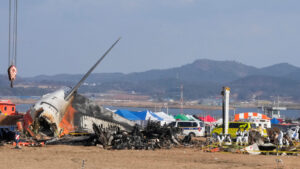Ukraine War Resolution: Possible Paths to Peace by 2025
The Ukraine war has stretched on, leaving behind a trail of destruction, economic challenges, and global geopolitical tensions. As the conflict enters another critical phase, analysts and policymakers are exploring potential resolutions and the possible scenarios for peace by 2025. In this article, we will examine the key pathways that could bring an end to the Ukraine war and the challenges that lie ahead in achieving sustainable peace.
1. A Negotiated Settlement
One of the most discussed outcomes for ending the war is a negotiated settlement between Ukraine and Russia. International mediators, including the United Nations and European Union, continue to push for dialogue. A ceasefire agreement paired with territorial compromises might form the basis of a fragile but necessary peace. However, trust between the warring sides remains a significant hurdle.
2. Military Stalemate Leading to Talks
Another plausible scenario is a military stalemate where neither side achieves decisive victory. Exhaustion of resources, mounting casualties, and domestic pressures could force both Ukraine and Russia to seek an off-ramp through diplomatic means. Historical precedents suggest prolonged wars often conclude in negotiated agreements after reaching a point of mutual fatigue.
3. Increased International Pressure
Global powers, including the United States, European Union, and China, play pivotal roles in influencing the trajectory of the war. Economic sanctions, diplomatic isolation, and conditional aid packages might force Russia or Ukraine to reconsider their strategies and prioritize diplomacy over continued combat.
4. Internal Political Shifts
Political changes within either Ukraine or Russia could also influence the war’s outcome. Leadership transitions, public protests, or internal dissent might reshape national priorities and open doors for renewed peace initiatives.
5. Frozen Conflict Scenario
In some cases, wars do not formally end but transition into “frozen conflicts.” This scenario would mean intermittent skirmishes, heavily militarized zones, and prolonged tensions without a formal peace agreement. While not ideal, it has been a recurring outcome in similar geopolitical conflicts.
6. The Role of International Institutions
Organizations like NATO, the UN, and OSCE remain central to any sustainable resolution. Their roles in overseeing ceasefires, humanitarian aid, and post-war reconstruction will be critical in stabilizing the region and preventing a resurgence of violence.
More Stories
Israel Orders Full Evacuation of Gaza City Ahead of Major Attack
The Israeli military has officially ordered the evacuation of the entire Gaza City in preparation for a large-scale military assault....
Spain to Ban Israeli Cargo Ships and Planes from Entering Its Territory
In a major shift in international relations, Spain has announced that it will be blocking Israeli cargo ships and planes...
Putin: Western Soldiers Are Legitimate Targets If They Enter Ukraine
IntroductionIn a shocking statement, Russian President Vladimir Putin declared that any Western soldiers entering Ukraine will be considered legitimate military...
📰 Escalating Violence: Israel Airstrikes Destroy High-Rise Buildings in Gaza City
▶ Brutal Strikes Target Civilian Infrastructure According to local sources and international media, Israeli fighter jets launched a series of...
📰 SUI Token Price Fails to Rise Despite Speculation
In recent weeks, the crypto market was abuzz with speculation that the SUI token price could surge significantly. Many traders...
Coinbase Executive Warns Bitcoin Could Explode Like the South Sea Bubble
In a striking statement that has stirred debate across the crypto industry, a senior executive at Coinbase Asset Management has...

